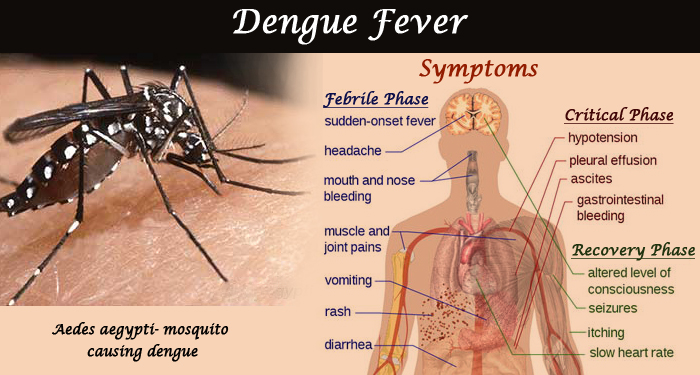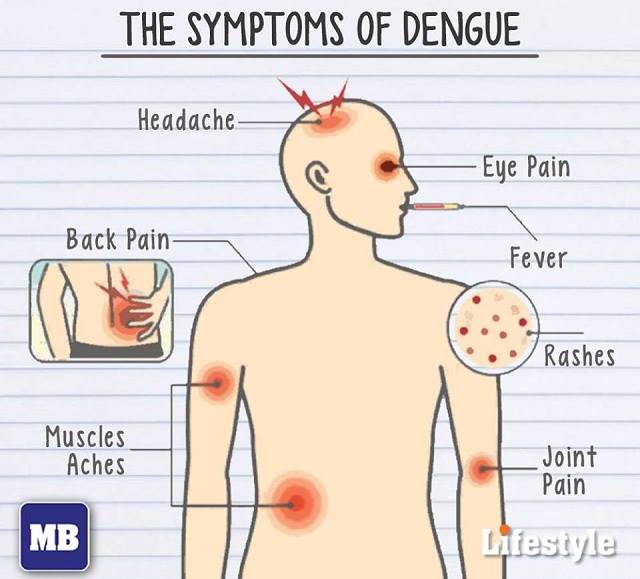What is Dengue Fever?
Dengue fever is an infectious disease carried by mosquitoes and caused by any of four related dengue viruses. This disease used to be called "break-bone" fever because it sometimes causes severe joint and muscle pain that feels like bones are breaking.
 Health experts have known about dengue fever for more than 200 years.
Health experts have known about dengue fever for more than 200 years.
Dengue fever is found mostly during and shortly after the rainy season in tropical and subtropical areas of the Caribbean and Central and South America, Africa, Southeast Asia and China, India, the Middle East, Australia and the South and Central Pacific.
Worldwide, 50 to 100 million cases of dengue infection occur each year. This includes 100 to 200 cases in the United States, mostly in people who have recently traveled abroad. Many more cases likely go unreported because some health care providers do not recognize the disease.
Cause
Dengue fever can be caused by any one of four types of dengue virus: DEN-1, DEN-2, DEN-3, and DEN-4. You can be infected by at least two if not all four types at different times during your lifetime, but only once by the same type.

Symptoms
Symptoms of typical uncomplicated (classic) dengue usually start with fever within 4 to 7 days after you have been bitten by an infected mosquito. These symptoms include: high fever, up to 105ºF, severe headache, retro-orbital (behind the eye) pain, severe joint and muscle pain, nausea and vomiting, and rash.
The rash may appear over most of the body 3 to 4 days after the fever begins, and then subsides after 1 to 2 days. There may be a second rash a few days later.
Symptoms of dengue hemorrhagic fever include all of the symptoms of classic dengue plus bleeding from the nose, gums, or under the skin, causing purplish bruises, which results from damage to blood vessels. This form of dengue disease can cause death.
How Can I Prevent Dengue?
The best way to prevent dengue virus infection is to take special precautions to avoid being bitten by mosquitoes. Several dengue vaccines are being developed, but none is likely to be licensed by the Food and Drug Administration in the next few years.
Other precautions include:
- Keep surrounding areas free from free standing water.
- Wear long sleeves and light colored clothes.
- Use insect repellent when outside.
- Unscreened windows should be kept closed to prevent the mosquitoes from entering.
- Carefully inspect your environment to detect and eliminate all areas with standing water where mosquitoes can breed, such as flower pots, containers, birdbaths, discarded tires, etc.
